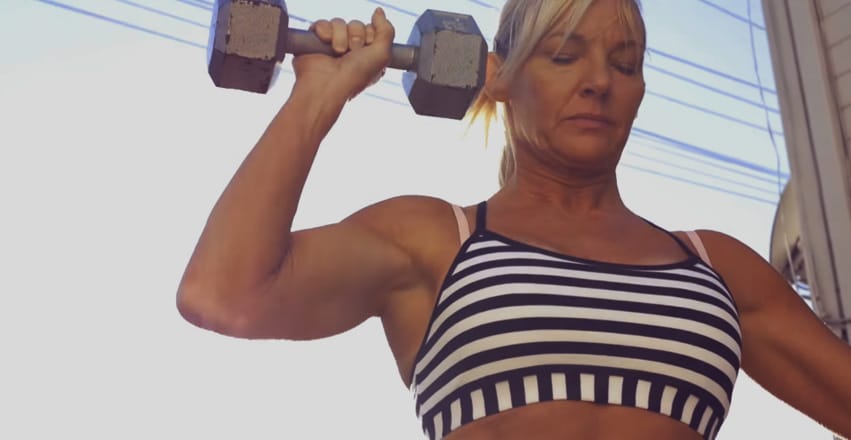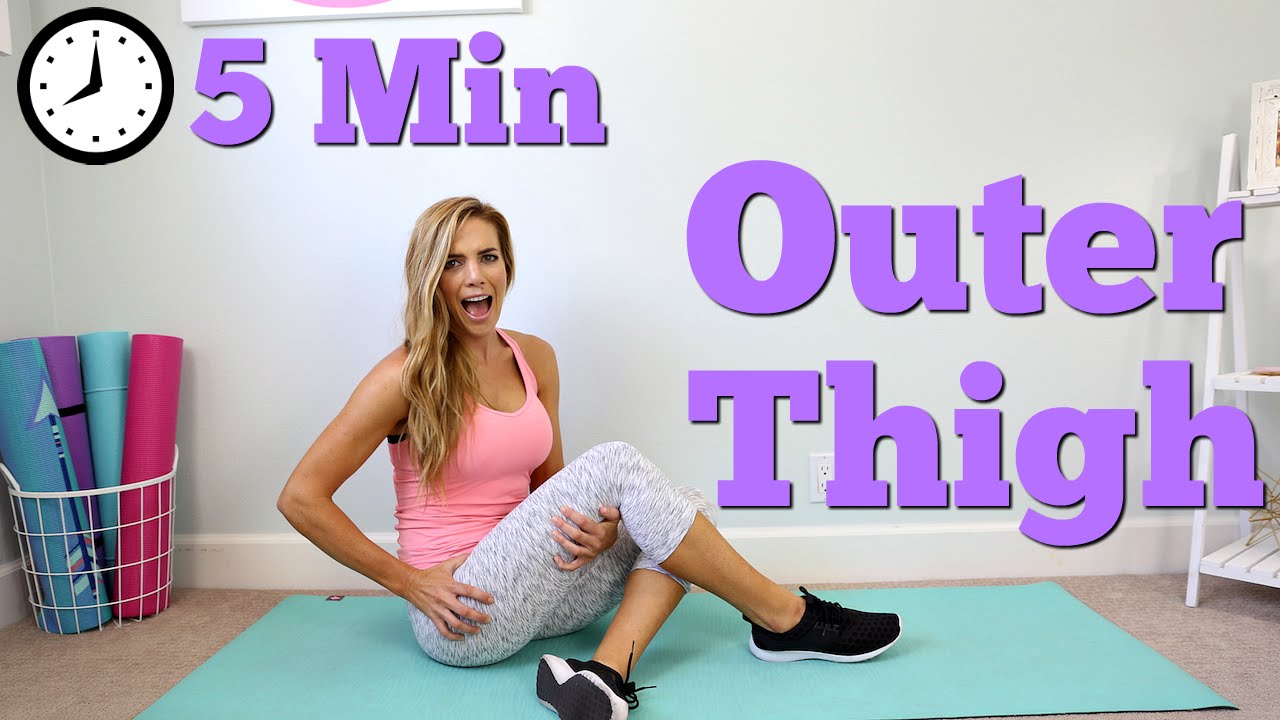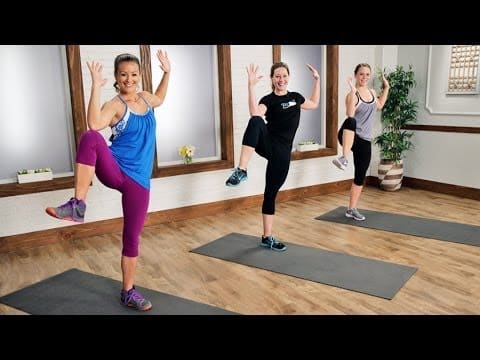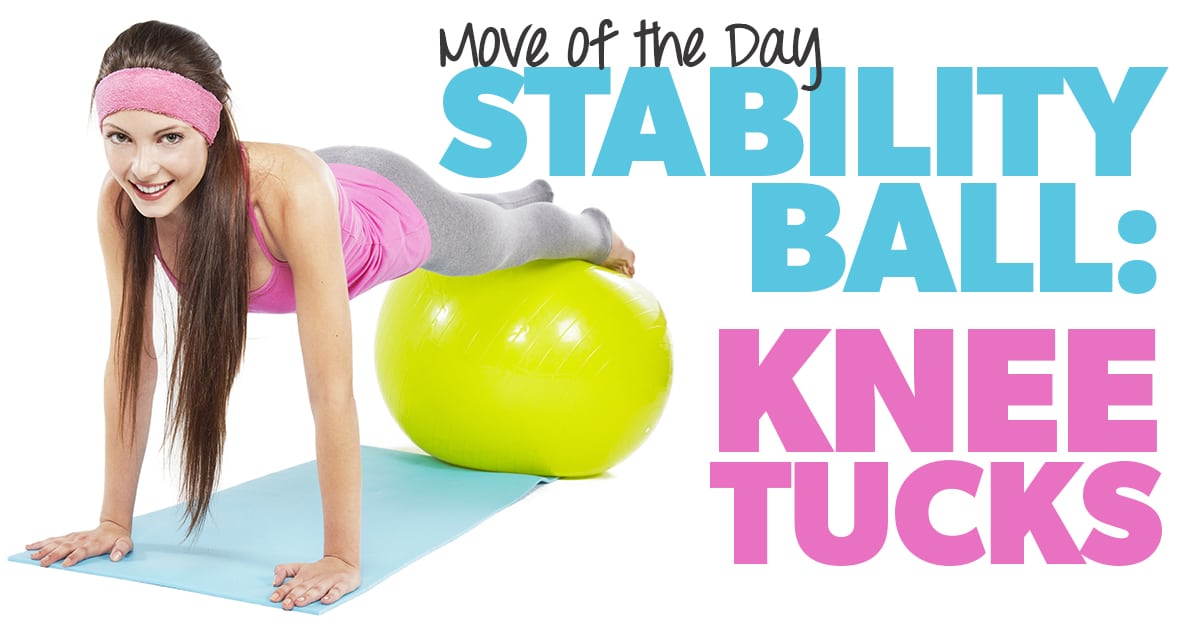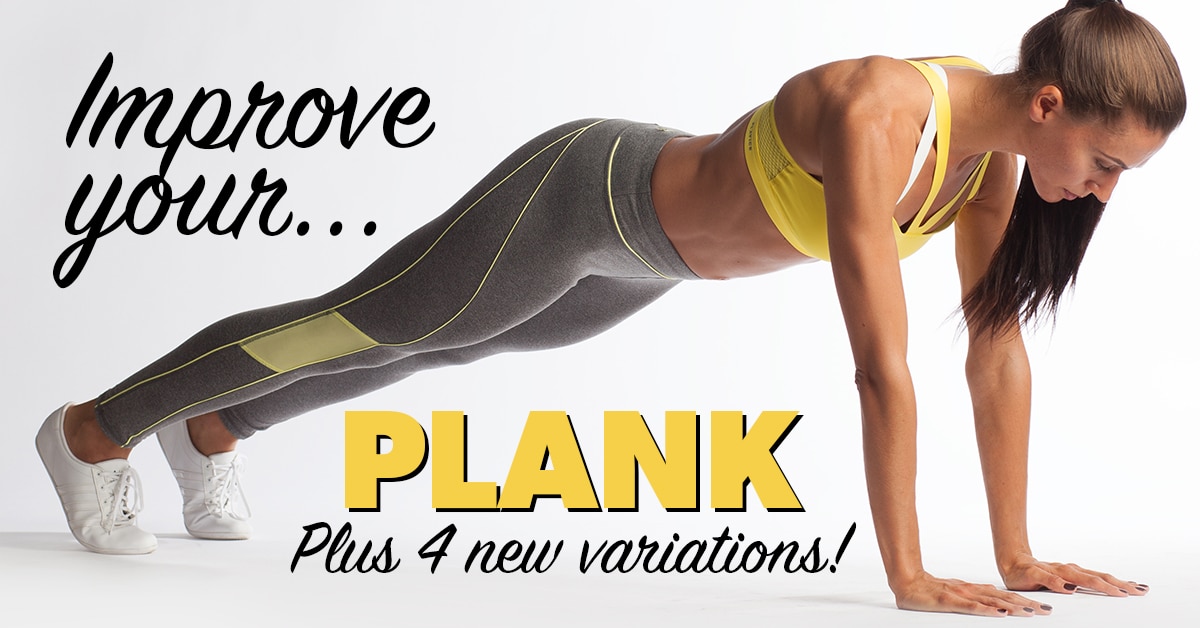Have you experienced a torn meniscus recently? Apart from those involved in contact sports, this knee injury can also be caused by the wear and tear of the knee joint from everyday activities like getting in and out of your car or squatting to pick something.
Although it isn’t always painful, a meniscus tear can significantly impact your ability to engage in physical exercise or daily activities. Recovery involves physical therapy, a tailored exercise program, and sometimes even surgery.
Let’s look at what is the best exercise for a torn meniscus to help regain mobility and for a safe and effective recovery.
What Is a Torn Meniscus?
The meniscus is a layer of cartilage between the thighbone (femur) and shinbone (tibia). It acts as a support for absorbing shock and impact and protecting the bones from wear and tear.
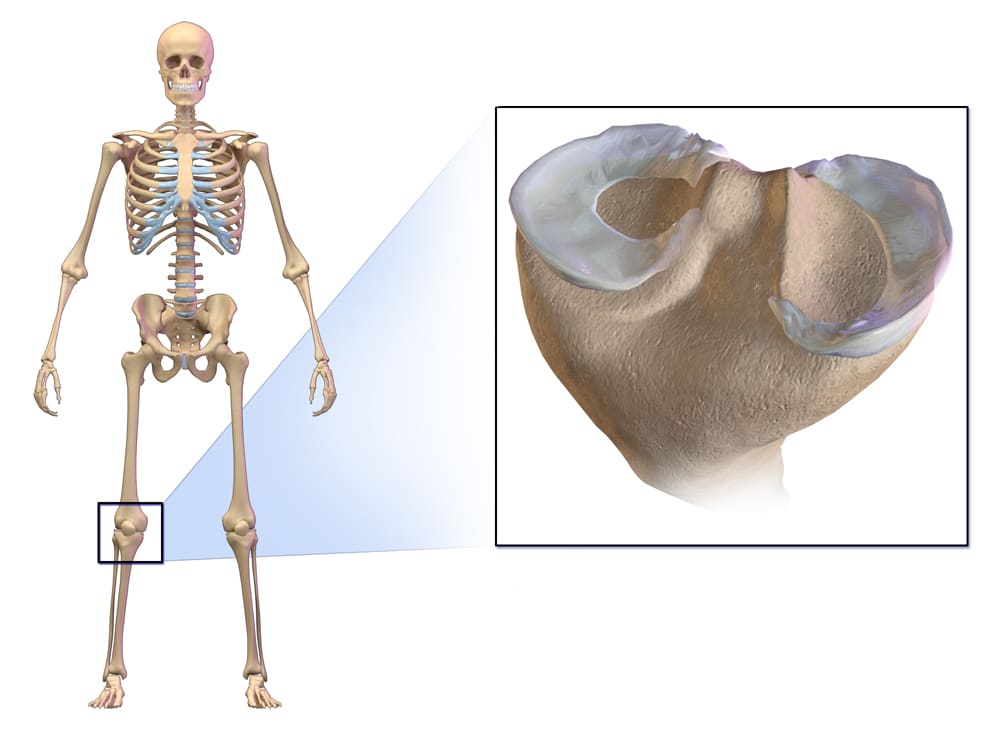
Each knee has two menisci, one on the inside of the knee joint (medial) and the other on the outside of the knee (lateral).
A torn meniscus is a fairly common knee injury that can occur when you twist or turn your knee. Often, this happens during sports or other physical activities. A meniscus tear can cause pain and swelling and also limit mobility.
However, this can also result from degenerative changes in the knee joint and develop gradually owing to age-related wear and tear.
The common symptoms of a torn meniscus include:
- Pain
- Swelling
- Stiffness
- Limited range of motion
- Finding it difficult to bend or straighten your knee
- Feeling your knee getting stuck or locked in certain positions
Best Exercises for a Torn Meniscus
If you have a torn meniscus, consult a healthcare professional or physical therapist first. The best exercise for it depends on how severe the injury is and other factors like age, overall health, and fitness level.
Generally, low-impact exercises that don’t put too much strain on the knee joint are recommended. Activities such as swimming, walking, cycling, or using an elliptical machine are ideal for maintaining cardiovascular fitness without putting too much stress on your knee joint.
Strengthening exercises targeting the muscles around the knee will help reduce pain and improve stability. Some examples include calf raises, lunges, squats (with light weights or resistance bands), and leg presses.
However, specific exercises are commonly recommended for rehabilitation and to help strengthen the knee joint. Such exercises enhance muscle strength, increase range of motion, and improve stability while avoiding excessive stress on the injured area.
Straight Leg Raises
Straight leg raises stretch your hamstrings and strengthen your quadricep muscles without straining your knee joint.
There are three ways you can perform straight leg raises:
Method #1: Straight Leg Raise to the Front
Lie on your back with your injured knee out straight and keep the other knee bent with your foot flat on the floor.
Keep your lower back at a normal curve such that you can slip your hand flat between the small of your back and the floor. Your palm must touch the floor while the back of your hand touches your back.
Slowly lift your straight leg off the ground, flexing the foot and tightening the thigh muscles while doing so. Lift the leg to about 45 degrees, hold it for a few seconds, and slowly lower it back.
Aim for two sets of ten reps each.
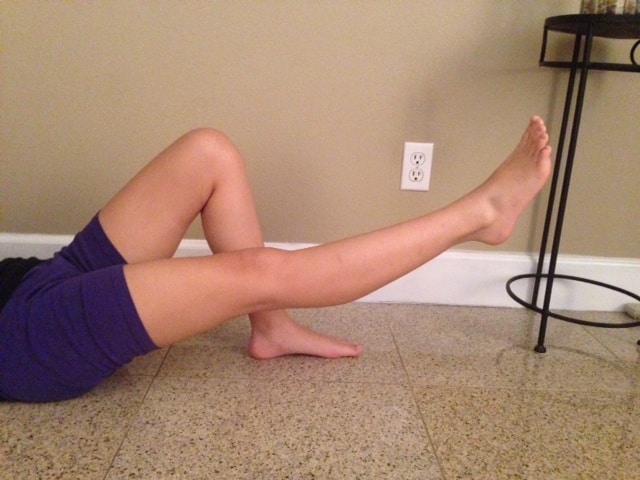
Method #2: Straight Leg Raise to the Back
This is another type of straight leg raise that strengthens the muscles in your buttocks and the back of your thigh.
To do this exercise, you must lie flat on your stomach. Rest your chin on your palms, which are placed one over the other.
Keeping both legs stretched out straight, slowly lift your injured knee straight behind you (toward the ceiling). Avoid over-exerting and lift the leg only as much as you comfortably can.
Aim to lift the leg about 6 inches (15 cm) off the floor if possible. Hold this position for five seconds, then slowly lower the leg to the floor.
Aim for 8-12 reps.
Method #3: Straight Leg Raise on the Side
You can also perform straight leg raises by lying on your side. In this position, you’ll work your gluteus medius muscles (hip abductors).
To perform this exercise, lie on your uninjured side with your legs stretched straight and on each other. Rest your head on your lower arm while using your other arm to maintain stability.
Slowly lift the upper leg straight up as high as you comfortably can without moving the rest of your body. Maintain the position for about five seconds, then slowly lower the leg to rest on your other leg.
Aim for about ten reps.
Standing Calf Raises
Standing heel raises or standing calf raises are intended to strengthen your calf muscles.
To perform standing calf raises, stand with your feet hip-width apart. You can stand near a wall or use a chair for balance if necessary. Slowly, rise on your toes and lift your heels off the ground as high as possible.
Hold this position for a second, and then slowly lower your heels to the ground. Aim for 2-3 sets of 8-10 reps, resting for about 30 seconds to a minute between sets.
Initially, this exercise must be performed by lifting both legs simultaneously. Later, you can progress to single-leg calf raises.
Clamshells
Clams or clamshells work different muscles of your lower body, including the hip abductors, which provide stability to your knee joint and buttocks muscles.
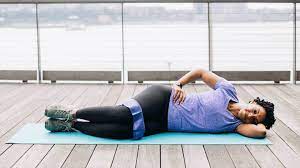
To start with this exercise, lie on your uninjured side with your knees bent at a 45-degree angle, stacked on each other. Rest your head on your lower arm while your other arm can be used for stabilizing your position.
Engage your core, keep your feet together, then lift your top knee as high as you comfortably can. Refrain from moving your lower back or pelvis in the process.
Hold this position for a moment, then slowly lower your top knee to its starting position.
Aim for 2-3 sets of 8-12 reps per set. If you’d like to make it more challenging, wrap a resistance band around your thighs for the exercise.
Hamstring Curls
Hamstrings curls target the hamstring muscles or the muscles in the back of the thighs. There are two different ways to do this exercise:
Method #1
This method involves standing upright and using a chair or wall for support if required. Slowly bend your knee and bring the heel towards your buttocks. Hold the position for a few seconds, then lower your leg.
Perform about 8-12 reps. You can do this for both legs.
Method #2
This method involves lying on your stomach and keeping your legs straight. If you’re feeling discomfort around your kneecap, place a rolled-up washcloth under your leg, just above the kneecap.
Slowly bend your knee and lift the foot toward your buttocks (or as much as you can bend your knee without causing pain). Hold this position for a few seconds, then slowly lower your foot to the floor.
Perform two sets of 8-10 reps and rest for about 30 seconds.
You can also use a resistance band around your ankle to add more impact to the exercise.
Partial Squats
Partial squats are otherwise known as half squats or mini squats. They help strengthen your quadriceps or the large muscles at the front of your thigh, hamstrings, and gluteal muscles. Partial squats minimize the stress on your knee joint.
To do this exercise, stand with your back, shoulders, and head against a wall, if you require support. Keep your feet shoulder-width apart and about one foot away from the wall.
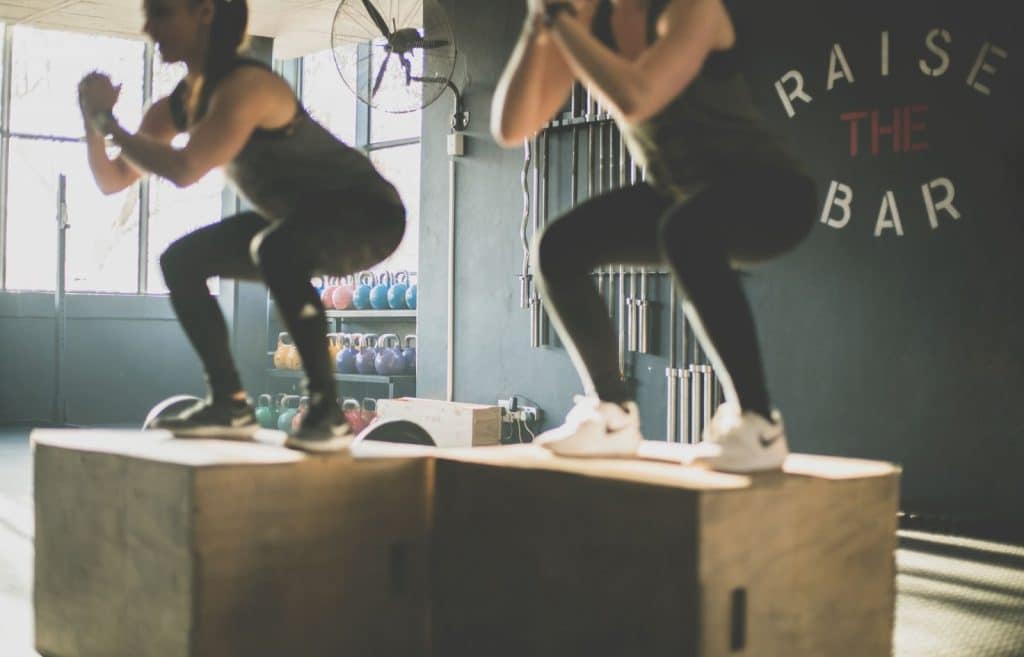
Bend your knees slowly and lower your body a few inches, bringing your buttocks toward the ground as if sitting on a chair. Hold this position for about ten seconds.
Then, slowly bring your body back to the starting position, keeping your back and shoulders against the wall. Ensure your knees don’t extend past your toes during this exercise.
Aim for two sets of 8-10 reps each. Rest for about 30 seconds to a minute between the sets.
Note: While doing this exercise, keeping your back and shoulders against the wall is essential as it helps reduce stress on your knees.
Quad Sets
This exercise will help strengthen the muscles on the top of your thigh. Quad sets help you “set” your quadricep muscles by holding them tight.
To start the exercise, sit on the floor with your palms resting behind you for support. Keep your injured leg straight before you, with your other leg bent at your knee.
In case you’re feeling discomfort under your injured kneecap, place a small rolled towel under your knee for the exercise.
Tighten the muscles on your thigh’s top portion and press the back portion of your knee flat to the floor or on the towel. Hold this position for about six seconds, then relax your knee and thigh for up to ten seconds. Aim for 8-12 reps several times during the day.
Hamstring Heel Digs
This hamstring exercise also helps strengthen your abdominal muscles and muscles in your lower body and hips.
For this exercise, you must lie flat on your back, bend your knees, and bend your ankles such that your heels dig into the floor. Your knees must be bent at about a 90-degree angle in this position.
Tighten your core, push your heels into the floor, and lift your hips. Your knees, hips, and shoulders must be in one straight line.
Try holding this position for about six seconds and maintain normal breathing. Then, slowly lower your hips back to the floor. Repeat this exercise 8-10 times, with a 30-second to a minute break between the reps.
Things To Keep in Mind
If you’re with a torn meniscus and looking for ways to heal it, there are certain things you must keep in mind.
Avoid high-impact activities like running or jumping till the injury has healed. Such activities can put too much stress on your knee joint and worsen it.
Often, physical therapy might be recommended to help restore your affected knee’s range of motion and strength. A physical therapist can also guide you on the exercises you can safely do at home.
Alongside exercise therapy, sufficient rest and icing of the affected area will help reduce pain and inflammation.
However, surgery may be necessary when conservative treatments fail to provide relief or if there’s significant damage to the meniscus. Post-surgery recovery usually involves rest followed by physical therapy to help regain strength and mobility in your knee joint.
Consult with a physical therapist or healthcare professional before you start any new exercise program after a torn meniscus; they’ll provide guidance for the appropriate exercises for your needs and goals.
Summing It Up
The best exercises for a torn meniscus can strengthen the surrounding muscles and promote joint stability without causing more pain.
While the exercises mentioned here are undoubtedly beneficial, you must remember that each person’s injury is different and will require a unique recovery process.
It’s best to consult with a physical therapist for personalized guidance and supervision to help in the healing process. They will assess the severity of your injury, fitness level, and other essential factors to design an exercise regimen to suit your needs.
These exercises are best done under the supervision of a professional and with caution. Remember, consistency and commitment are crucial to recovery.

